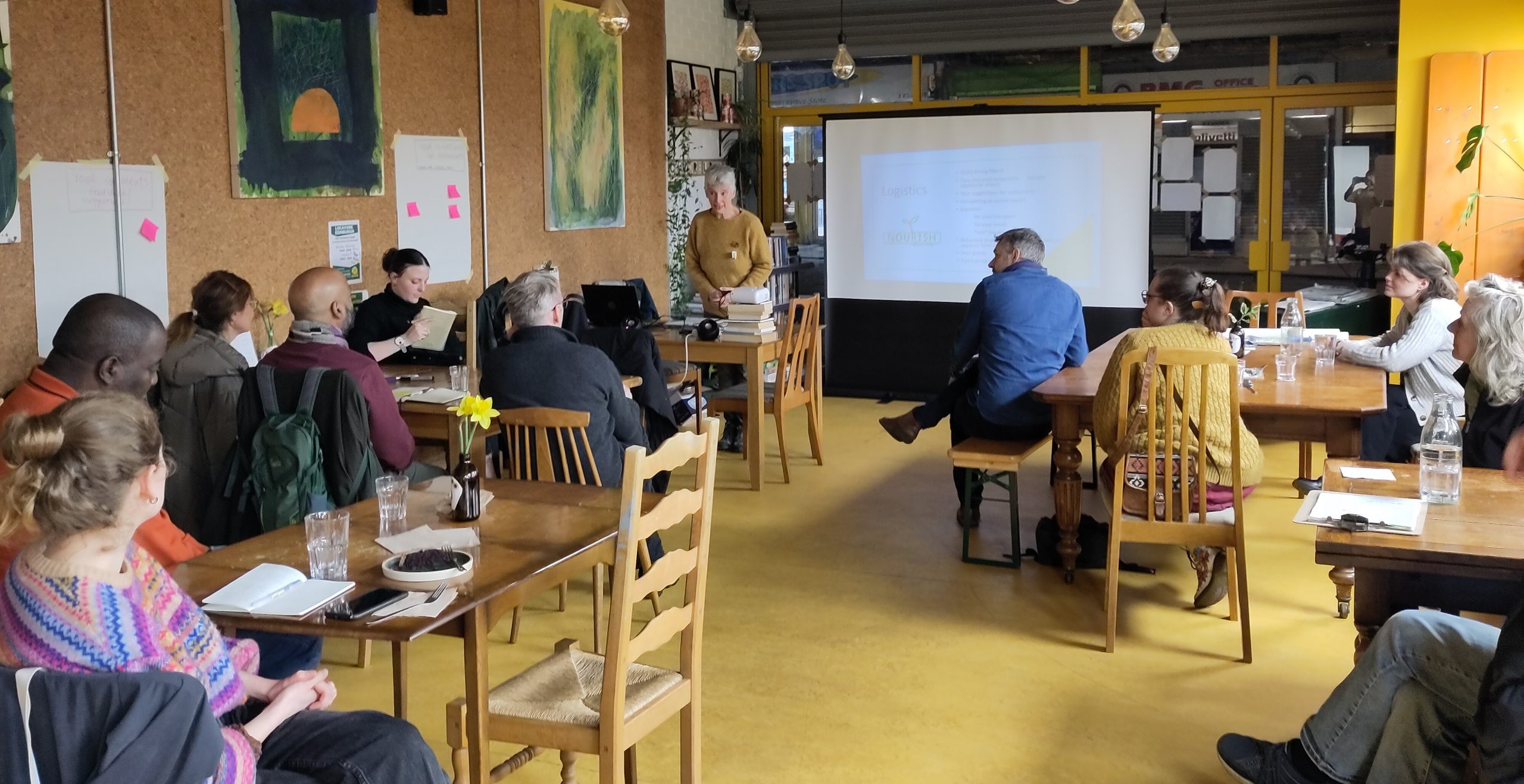Co-defining public diners
In 2022-23 we worked with a group of diners to test what people really care about when they eat out. We wanted to use this insight in developing the definion and criteria for ‘public diners‘ – a new social institution we believe is needed to make it easier for all of us to eat well.
We trained a diverse bunch of people to review a range of eating venues in the Central Belt. 25 reviewers went for a couple of meals with close family or friends and rated them on a set of draft criteria we set out for a public diner: health, accessibility, general appeal, affordability.
What did we find out?
The reviewers’ views were quite mixed on some things. Large familiar brands such as IKEA’s diners, Cosmo, superstore cafes, were controversial, with some reviewers highly valuing their commonly available familiar foods and processes, where they were done well. For others, the familiarity was the nail in the coffin (‘bland’), instead preferring places with distinct menus and ambience.
Similarly, meals in places with explicit cultural agendas such as in religious places, vegan / vegetarian cafés, were condemned with low scores by some of our reviewers yet got the highest scores by others. Also places that served seasonal, locally sourced, wholly plant-based foods and other foods with lower carbon footprints, were highly praised by some, whereas others said that they could not find anything to eat that they liked, the kids went home hungry, and they regretted the waste they created on their plates.
It seemed that our reviewers did not always feel welcome in places that did not match their own identity. Some mentioned they had felt ‘the odd one out’. One person commented: ‘obviously some people would not go there since it is 100% vegan and that is not for everyone.’
There was broad agreement on some other things like what was a healthy enough menu. The things that uniformly put reviewers off was when it mainly offered oily (deep fried) foods, and when there were only limited food options (including vegan). A good range of options was generally preferred.
Atmosphere and ambience were also important. Peaceful and calm places were generally rated more highly.
Accessibility was uniformly defined and largely agreed on. They noticed the absence of facilities that help with mobility challenges and praised features that welcome a range of visitors (e.g. space for buggies and highchairs, accessible toilets). They appreciated clear listings of ingredients and commented on how staff dealt (well or badly) with dietary questions.

Perhaps the strongest agreement was around the importance of staff attitude, and there was a sensitivity to whether the place was generally respectful of people. There were frequent mentions of friendly and patient, attentive and skilled staff. They expressed appreciation of volunteers being trained and the offer of wider community support and services. In fact, where staff was friendly, overall other ratings were higher, as if our reviewers willed the food and other things to be better than they actually were. They noticed the absence of a varied mix of fellow diners and the offer of different types of seating to accommodate them, when staff or the place generally did not feel welcoming.
Similarly, places with sympathetic payment methods such as the invitation to donate or pay-as-you-can, deals for kids, were highly rated. They observed that some places were too expensive for many people. All four reviewers of the museum cafes condemned them for being ‘elite’ and frequented by a narrow range of (‘posh’) customers only.
We concluded that different reviewers had different ideas about some of the defining characteristics of the venues they visited. These often aligned with their cultural identities. By contrast, on health and accessibility, there was widespread agreement. This was not important enough to result in consistent scoring patterns. The most important thing was how human the place was perceived to be. Staff friendliness, sympathetic pricing, catering to a range of needs and preferences, and attention to detail around accessibility, for example, pushed ratings up.
This exercise showed there are plenty of challenges ahead when it comes to deciding, for example, on what food should be served in a public diner, or how issues around their environmental footprint could be handled. Economic viability is also something we still have to investigate. For now, we gladly receive your comments on any of the above and the wider idea of what we are trying to do.
Get in touch with Abigail at abigail@nourishscotland.org.uk to share your thought or to be added to our email list for updates on this project.